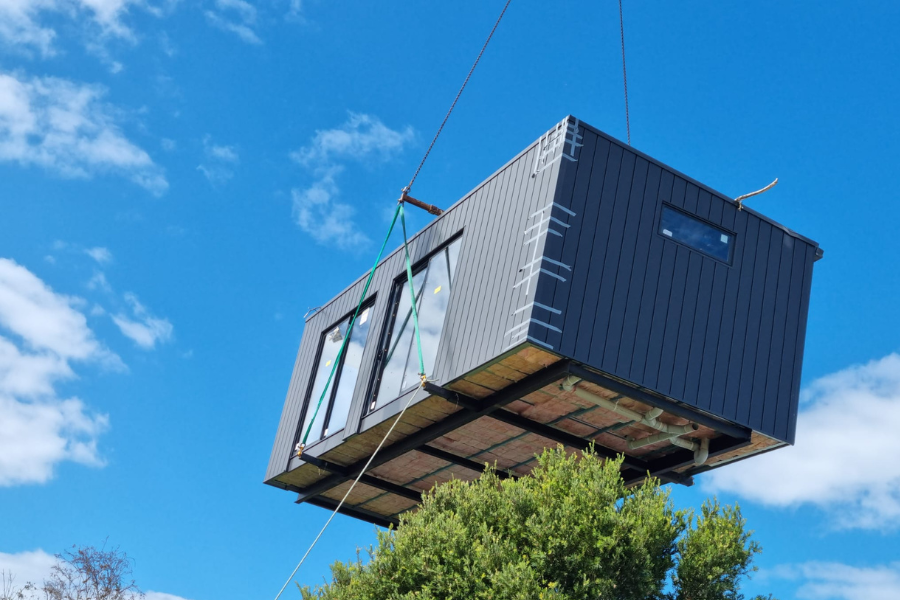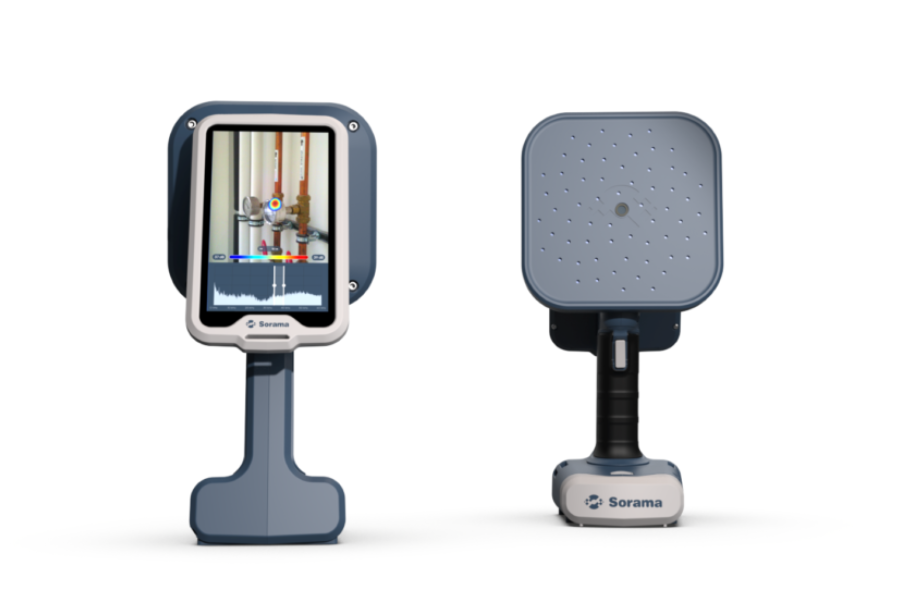Jul 24, 2023
Never Underestimate the Power of Innovation
Technology is moving fast, and many of the solutions have the potential to be entirely disruptive to the current way we use energy.
By: Charley Cormany

Betting on The Future
As we forge our way toward a clean energy future, plenty of skeptics are quick to point out the many ways this transition could fail. When it comes to buildings, the naysayers point to supposed unreliability of renewable energy, the limits to storage technology, problems with electric grid capacity, or even concerns about refrigerants in heat pumps.
To the naysayers, I have one piece of advice. Don’t try and project what the future will look like based on today’s technology. No one would ever have predicted the growth of the internet based on copper phone lines with landlines and dial-up internet connections. Using today’s technology to support your arguments against a clean energy future is a losing proposition. Personally, I have more confidence in our collective resolve and our ability to tackle complex challenges. Let’s look at how we got here and what is next.
In the past few decades, we’ve seen a huge shift in our understanding of how our actions impact the planet. More and more people are aware at some level that emissions from fossil fuels don’t magically go away; they linger and accumulate. In the 1970s people worried about acid rain. Today there is hardly a day that goes by that people aren’t feeling the effects of climate change, whether it’s from extreme heat, smoke from wildfires, or drought. We can’t ignore the impacts of our actions forever.
A few decades ago, everyone was convinced that using electricity to heat your home was expensive. Even though heat pump technology was available and worked well for mild climates, most electric-heated homes used resistance heat, which was inefficient. Most electricity was generated from burning fossil fuels, which meant using electricity to heat your home was bad for the climate too.
Natural gas, on the other hand, was abundant, which made it cheap, and suppliers promoted it as the “clean” fossil fuel. Legislative efforts supported adopting natural gas solutions, especially in California. Cheap and clean was good. Dirty and expensive was bad.
Today people’s perceptions have done a complete 180. The price of renewable energy has plummeted. Clean electricity generated from solar and wind is now the lowest-cost energy source available. Natural gas and other fossil fuels are “dirty” and getting more expensive.
Even the biggest players in the fossil fuel industry can no longer ignore the handwriting on the wall. As the price of fossil fuel prices climb, so do the human costs. We have gone to war more than once to secure access to fossil fuels. Russia invaded Ukraine assuming the world’s dependence on its oil and gas would insulate it from consequences. How this gamble finally pays off remains to be seen, but the war the war has already hastened the transition to clean energy —heat pumps are selling like hotcakes in Europe. Contractors are waiting up to a year for equipment. The demand is unprecedented.
The Promise of Heat Pumps
Heat pumps, powered by electricity and using refrigerants, work by moving heat rather than creating it through combustion. This means they don’t generate emissions on-site. However, their environmental footprint can differ depending on where you are. If your electricity comes from burning fossil fuels like coal, using a heat pump could simply move emissions from your home to the power plant. But when your electricity is sourced from renewable energy like solar or wind power, heat pumps become an excellent low-emission alternative to traditional fossil fuel systems.
Heat pumps are a great example of a clean energy technology that’s changing rapidly. In May of this year, I attended the International Energy Association’s Heat Pump Conference in Chicago. The conference is now in its fourteenth year and is held in different locations around the globe. There were 400+ attendees from 24 different countries.
The conference was a bit overwhelming, as it was tailored for PhDs more than energy geeks. That said, I held my own and understood almost everything they were discussing. I walked away realizing that as we debate the value and practicality of heat pump technology today, advances in technology will likely eliminate most of our perceived barriers to adoption. I want to share a handful of the technological advances currently in progress.
Heat Pump Technology
Engineers continue to improve heat pump design. Some of the advances are a bit surprising. An example is improving the efficiency of the heat transfer tubes on outdoor units. Condensers use pipes and fins to transfer heat from the refrigerant to the air. Advances in condenser designs will allow for a much higher transfer rate using smaller tubing and more efficient fin designs. The result: higher energy transfer rates will allow for much smaller outdoor units. Imagine a 4-ton outdoor unit the size of a desktop computer tower. These units will be smaller and more efficient, with performance levels far beyond today’s technology.
Advanced Compressor Designs
The compressor is the workhorse of a heat pump. As the name implies, they compress the refrigerant, which starts the refrigeration cycle. Today’s compressors are big and noisy. Advances in compressor technology will allow heat pumps to use smaller compressors that are much more efficient and nearly silent. That should make lots of people happy.
Refrigerants
Naysayers are quick to bring up the problem of refrigerants. It’s true—many common refrigerants used today are potent greenhouse gasses if they get into the atmosphere. But fear not. Progress on low global warming potential (GWP) refrigerants is well underway.
A number of manufacturers are developing low-GWP refrigerants to address the problem head-on. Some are exploring using carbon dioxide, which by definition has a GWP of one (many of the common refrigerants have GWPs in the thousands). Others are working on closed-loop systems, like your refrigerator, where the heat transfer medium to the building is water instead of refrigerants. Not having to deal with refrigerants on-site would be a vast improvement. Low GWP refrigerants and easy-to-install systems with sealed refrigerants will simplify installation and reduce costs.
Phase Change Materials (PCM)
Phase change materials absorb thermal energy, in the same way a brick absorbs heat from the sun. PCMs have the potential to transform heating and cooling. Imagine an air conditioner or heat pump without refrigerant. The technology is gaining traction and is starting to enter the market today. An engineer described a system that uses a barrel full of PCMs instead of an outside condenser. The system would have a few moving parts and make virtually no noise. That system may be a few years out, but PCMs are already in use, supplementing current technology. Intelligent controls can direct refrigerant from a heat pump to charge (heat or cool) the PCM. As the demand increases, the PCM can release the stored energy, allowing heating or cooling without the refrigerant cycle. In effect, PCMs act like a battery for refrigerants. Adding storage to the heat pump refrigeration loop will increase efficiency dramatically. Smaller units combined with PCMs will provide significant gains in efficiency.
Air-to-Water Heat Pumps
One of the technologies I think will dramatically impact residential applications is air-to-water heat pumps. The basic premise is that a single heat pump provides both domestic hot water and space heating. Using one condenser to provide both space heating and water heating makes a ton of sense to me. These split-style systems offer several advantages for retrofit applications. Using one condenser means fewer electrical circuits. Noise is less of an issue as the heat pump and its mechanicals can be installed away from the storage tank and air handler. I also think a unit like this would be an easier sell as you can replace outdated furnaces and gas water heaters at the same time and go all-electric with a single installation.
Beyond Heat Pumps: Other Promising Technologies
Photovoltaic Thermal (PV/T)
Photovoltaic Thermal panels produce electricity and hot water in one unit. The panels incorporate photovoltaics to generate electricity and heat water with solar thermal collectors on the underside of the panel. There are several advantages to this solution. The thermal collection reduces the photovoltaics’ temperature, increasing their efficiency. Using one panel for electricity and hot water saves the space required on the roof. The thermal energy can be stored for use later which, in effect, makes them a storage and grid load reduction technology too. Blending these technologies seems like a great idea.
DC Direct Systems
Solar systems produce direct current (DC) voltage. Most systems use inverters to convert the DC to alternating current (AC) used in our homes. There are losses every time the electricity is converted from DC to AC. Several manufacturers are working on DC direct heat pump solutions. The concept is straightforward: use the DC energy from the PV panels to power the heat pump directly. Using DC avoids the conversion losses from inverters, which makes them more efficient. In grid-tied systems, (the majority of systems in use today), excess capacity is fed back to the grid. With DC direct systems, DC is used to do work, and inverters are used only to send extra power to the grid. The conversion losses from the conversion happen after the load.
DC is starting to become the preferred power source. Tesla superchargers are DC. Your computer uses DC. The little block you plug your phone into is a DC converter. Using DC without inverters is a simple way to be more efficient, as you avoid conversion loss from inverters. I suspect we will start seeing more DC direct appliances in the future.
Microgrids
We currently distribute electricity based on an antiquated model. The electrical grid was designed for central production and one-way distribution. As we switch to an electric future, this legacy design may be inadequate for the demand. The solution? Produce the electricity closer to the end user using solar panels, fuel cells, or another generation source.
A microgrid is a miniature version of the electrical distribution grid. Microgrids typically include production, distribution, and storage.
If you include some storage and intelligent controls, your microgrid can become an “island” and not need any energy from the grid. Microgrids also provide energy resilience, as the primary grid can go down, and the microgrid will still have power. The Fremont, California, fire department has established a microgrid supporting three firehouses. The Redwood Coast Airport, in Humbolt Count, California implemented a microgrid specifically for resilience. The microgrid allows the airport and a few other key players, such as the Coast Guard station, to become an island if needed. The potential for microgrids is enormous.
These are just a few of the technologies shaping the clean energy future. Some are mature and ready to go to market. Others are in the research and development stage. One thing they have in common — they are directly addressing some of the barriers to decarbonization, electrification, and an all-electric future.
I wanted to share a few of these currently developing ideas to demonstrate that using today’s technology to support an argument against clean energy and an all-electric future is likely a losing bet. It’s like people’s predictions about computers and cell phones in the late 1990s. Technology is moving fast, and many of the solutions have the potential to be entirely disruptive to the current way we use energy.
One thing we can be pretty sure of is that fossil fuels are on their way out. Policy goals and economics are strongly favoring clean energy. To the naysayers, I will concede that fossil fuels will be in use for many years. Some applications are tough to convert. But I would not bet against renewable, carbon-free, clean energy. Advances in technology will overcome many of the barriers we face today. Economics and policy play a role. The transition away from fossil fuels is underway and gaining traction.
Predicting the future based on today’s technology is a risky proposition. All I can say with confidence is that energy use in buildings will look much different than it does today.
Think back to the first cell phones. Naysayers were convinced no one would want them; they would be too large, expensive, and impractical. Are you willing to make the same mistake?
This article was originally published in the EfficiencyFirst CA blog and is republished with permission.





